by Alessandra Ressa
Trieste always manages to surprise me, even when I think I know it well. Just last Sunday, I stumbled upon another hidden treasure, practically in my own backyard.
It was Via Crispi that caught my eye this time. Running parallel to the lively, pedestrian-friendly Viale XX Settembre, Via Crispi starts off as a rather unremarkable street—dark, busy, and a bit rough around the edges. The apartment buildings are average, the shops are forgettable, and the corner cafés seem worn and tired. At first, it didn’t strike me as anything special. But as I continued walking, leaving those ordinary blocks behind, I found myself pleasantly surprised.
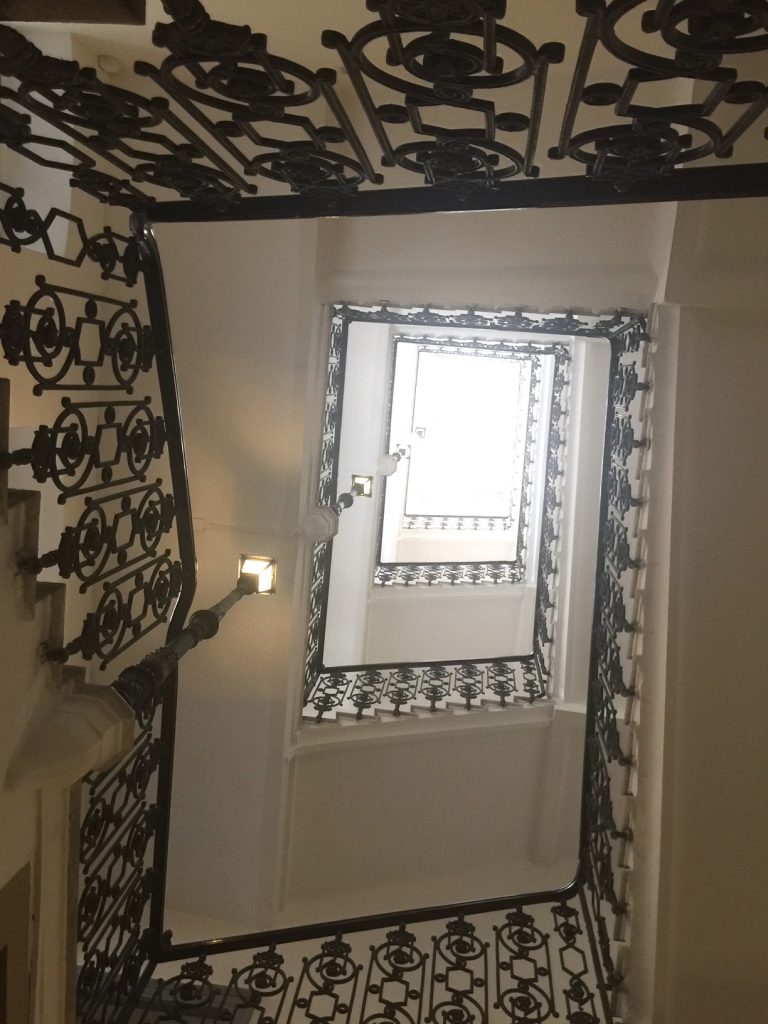
Pass the back of the beautiful neoclassic Rossetti theater (the yellow building on the left climbing the street uphill) and look around you. Here is where Trieste aristocracy used to live, and still does to this day.

Beautiful villas and little castles stand one after another, each representing a different era, a different architectural style, and all surrounded by vintage gardens and parks. Some of these properties are still occupied by descendants of the wealthy families who once dominated the economic and political life of Trieste, others have been transformed into luxury apartments.

It is the case of Villa Franellich, a castle-like mansion at number 43. Built in 1876, it once belonged to Luigi Franellich, a rich intellectual, whose impressive art collection is exposed at Museo Revoltella. Incredibly, not much else is known about this benefactor, except that he is buried in the St. Anna Cemetery along with other local “celebrities”, not far from Umberto Saba‘s grave. Today, some of the apartments of Villa Franellich still retain their original wooden floors (photo dated 1930).
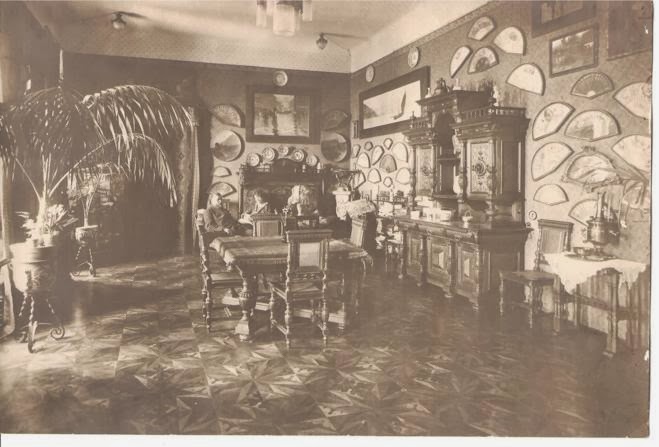
Most villas facing Via Crispi, which later turns into Via Pindemonte, date back to the late 1800s and offer interesting cues to different architectural styles. The most prevalent appears to be eclecticism, a form of architecture very popular in Europe at that time, that incorporated just about every style, including a hint at Victorian, as with the burgundy house in need of painting.

I particularly like a “villa” at the very end of Via Crispi, number 76. It is old, and surely it must have seen and entertained the very best society of Trieste, with its Venetian style decorated windows, frescoes, even an elegant garden with ancient trees.
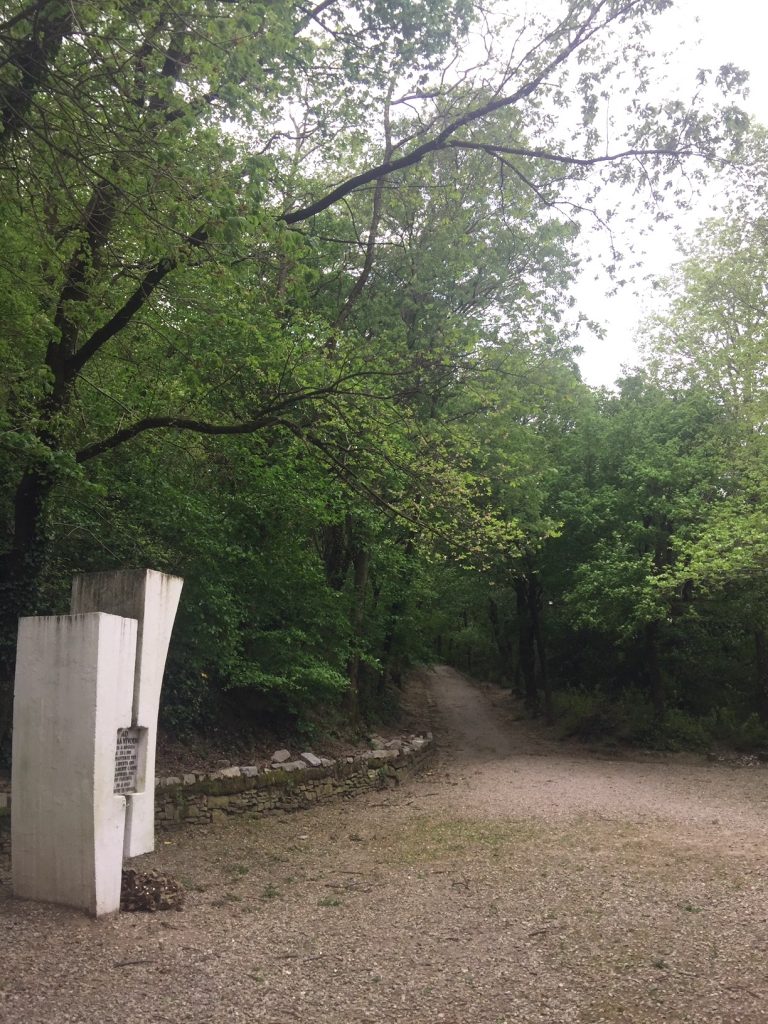
If you look closely, however, what appears to be a house with private entrance directly on the street is truly the top floor of an apartment building that begins in Viale XX Settembre.
Via Crispi and Viale XX Settembre run parallel and are separated by a steep hill that has been maintained and built upon. So, the seven or eight floor buildings of the Viale become the one or two floor buildings of Via Crispi, with beautiful indoor spiraling stairs running down the hill.
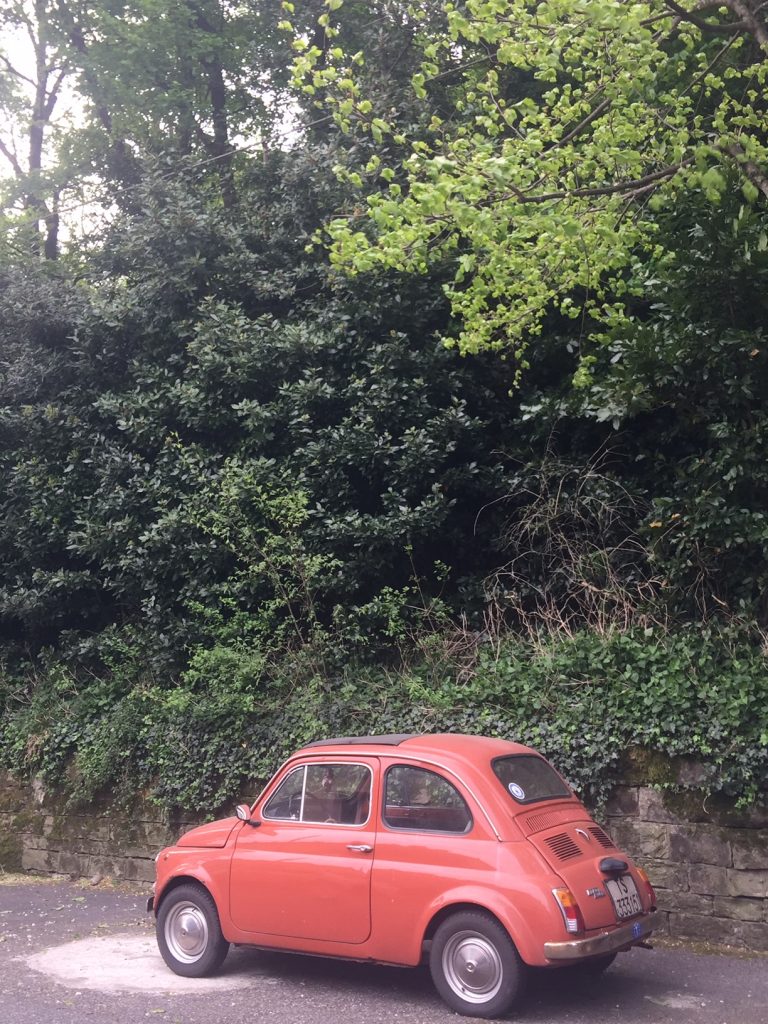
Sadly, some old mansions have been demolished to give way to big, modern apartment buildings. The area is still very exclusive, and we can only hope that what remains of the glorious past of Trieste will be preserved.
If you think this is all Via Crispi has to offer, think again. Along the street there are two fountains dating back almost three centuries. The first one is a lion head over a stone shell, located right in front of the Rossetti theater.
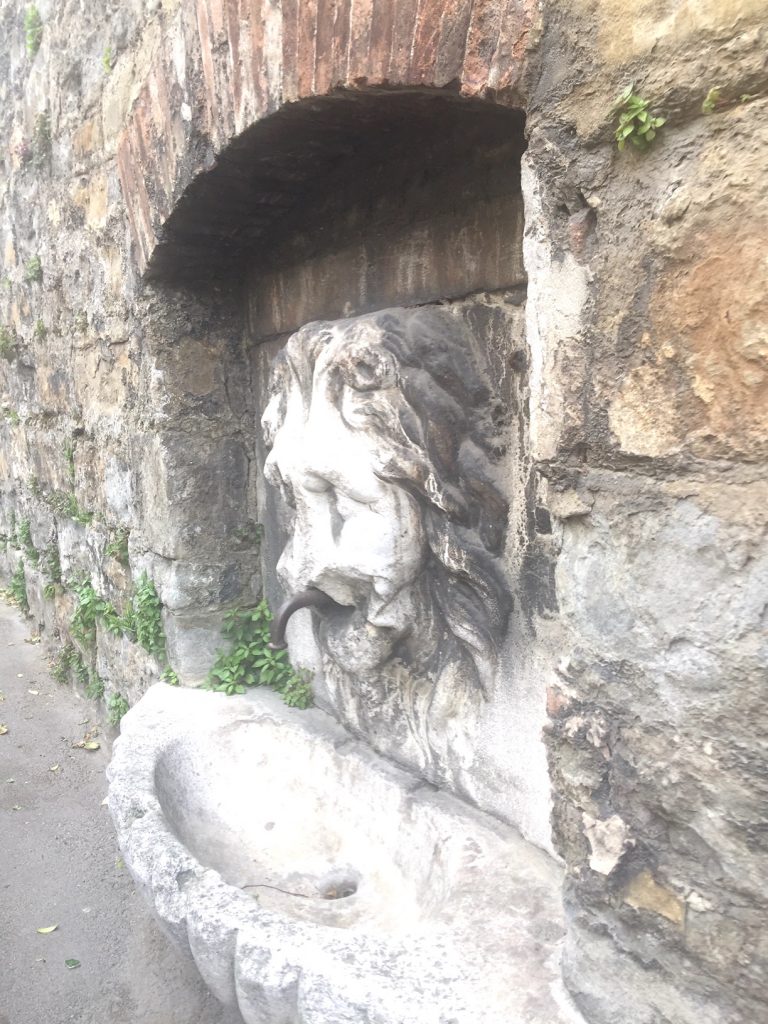
The second one is an emblematic fishlike creature with a curious story. Both have long been dry but, while the lion fountain is easy to notice, you almost run into it while strolling along the narrow sidewalk, you may risk to miss the “fish” unless you look closely.

Located on one of the outer walls of one of the villas, the “dolphin fountain”, as it is known, is a stone statue of a bizarre fish, looking more like a mythological creature, which used to spill water from the mouth.
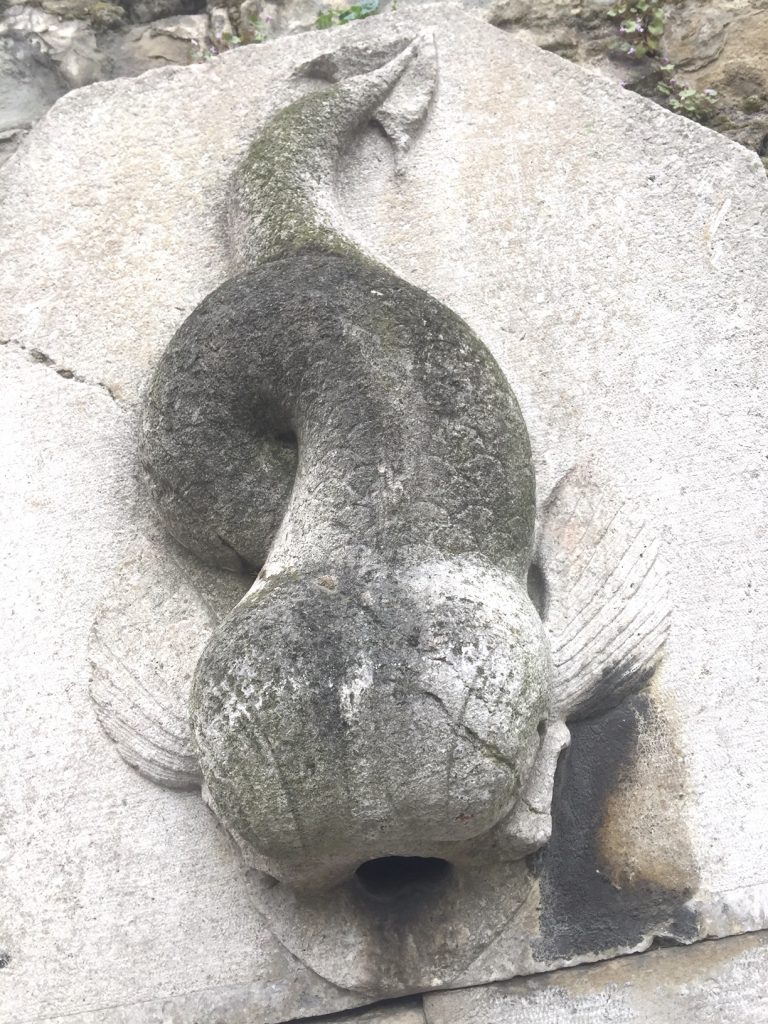
It was initially believed that the fountain, together with many others positioned in the area and now gone, belonged to the Hapsburg Theresian aqueduct that ran along Via Crispi when Trieste was under Austrian rule. Water was transported to the fountains by long interconnected underground tunnels. These hidden waterways were accessible to technicians through inspection windows located next to each fountain.
The dolphin fountain‘s own inspection window had been walled up for decades, before its bricks were mysteriously removed some years ago. That seemed to be the occasion for local speleologists to explore the tunnel connected to the fountain and determine its historical origins.
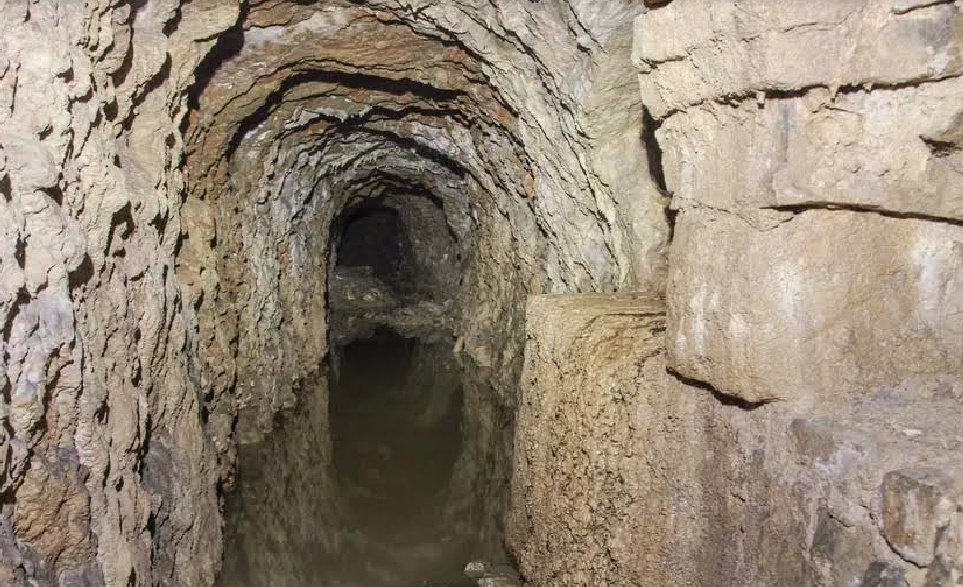
To their surprise, they discovered that the lengthy underground gallery, approximately 40 meters long, half filled with crystal clear water (photo courtesy of the Società Adriatica di Speleologia) did not belong to the Theresian aqueduct, but probably dated back to a much older time in history. It appeared to be completely independent from all waterways.
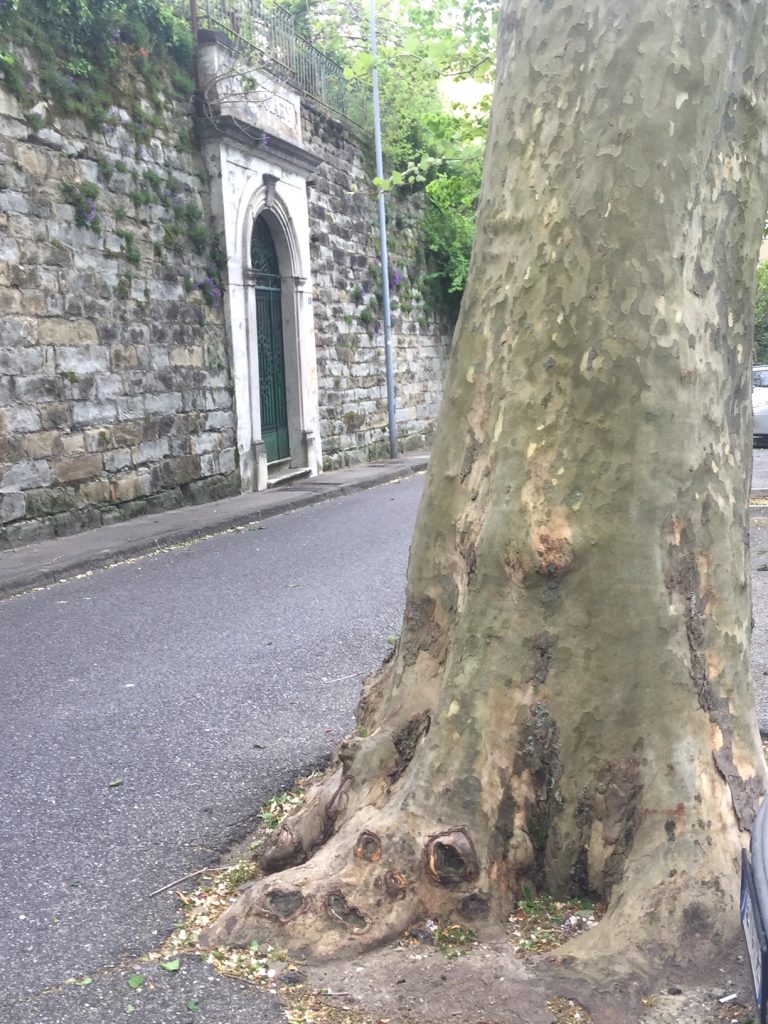
If you continue your walk, Via Crispi turns into Via Pindemonte and old elms begin to appear in the street almost as obstacles to traffic. You’ll notice the vegetation getting thicker and thicker and some stairs on your right. This is one of the entrances to the old hunting grounds of Austrian Emperor Franz Ferdinand, today a beautiful and huge public park called Bosco del Farneto, known by locals as “boschetto” (little wood).




























